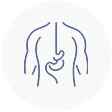Breast Surgery
Breast Reduction Surgery
WHAT IS BREAST REDUCTION?
Breast Reduction Surgery Breast reduction surgery, also known as mammoplasty, is done to remove extra fat, tissue, and skin from your breast. This will help lift and reshape your breast and improve the positioning of your nipple. A breast reduction can eliminate back pain, shoulder pain, and even make you look leaner.
While some women just have a genetic abundance of breast tissue, for others, it can result from pregnancy, wright gain or menopause. Regardless of the reason, overly large breasts can be physically painful. They may also make you feel dumpy, self-conscious, and even keep you from wearing the clothes that you want.
Patients who undergo breast reduction are some of the most satisfied of all plastic surgery patients because this is the procedure that can literally change your everyday life.
We recommend breast reduction with liposuction to recontour your breast shape with best aesthetic result, especially if you have bulky tissue on your lateral chest wall that cannot be surgically removed.
You can choose to have breast reduction surgery after or at the same time as another procedure to help your breasts match in size and shape. If you’re having a lumpectomy (surgery to remove a tumour from your breast), you may have the option to have an oncoplastic reduction at the same time as your surgery. This is when your Breast Surgeon, Dr Davarpanah rearranges the tissue remaining in your breast during your surgery. You may choose to have a reduction on your other breast so that your breasts are more similar in size.
You may need to get a mammogram before this surgery if you have not had any mammogram in last one year and you are above 40 years old
WHO ARE NOT A GOOD CANDIDATE FOR THIS SURGERY?
If you are a smoker or have comorbidities, you may not be a good candidate for this procedure as the risks of poor healing and infection leading to permanent scarring and poor aesthetic results may be much higher.
WHAT IS THE DIFFERENCE BETWEEN BREAST REDUCTION AND BREAST LIFT?
A breast reduction is really a breast lift that also removes excess breast volume. Some patients, particularly those whose breasts have dropped post children, don’t have an excess in breast volume. Their breast skin has simply stretched. So, lifting the breasts and removing the excess skin is enough. But for patients who have too much tissue, the skin envelope must be reduced, and the extra tissue removed. I am terrified that a scar on the breast will make me undesirable. Do you find this to be true? Not at all. What most people find desirable is confidence. Restoring your body to its proper proportion by reducing the size of your breasts is going to make you feel better about yourself. And in my experience, this self-confidence translates into every aspect of my breast reduction patient’s lives.
Oncoplastic surgery is a selection of surgical procedures that combine cancer removal with efforts to preserve or improve breast appearance after surgery.
Oncoplastic surgery includes complete full-thickness closure of the lumpectomy-related cavity, to prevent depressions distorting scars from developing in the breast after cancer removal.
More complex oncoplastic surgery procedures also include breast cancer surgery combined with breast reduction or breast lifts of both breasts to improve breast appearance and symmetry.
Oncoplastic surgery requires specialized training and is not widely performed by Breast Surgeons.
Dr. Davarpanah is a trained Breast Surgeon from UK and perform complex oncoplastic surgery with Plastic Surgeon Dr Bangash to achieve best aesthetic result as well as oncological outcome.
What is a breast lumpectomy? Dr Nasrin Davarpanah explains further.
Lumpectomy is the surgical procedure in which only a part of the breast is removed to eliminate a breast cancer.
Lumpectomy is different than mastectomy, which involves removal of the entire breast. In addition to removing the breast cancer, lumpectomy also requires removal of a narrow rim of healthy tissue surrounding the cancer to ensure that the entire cancer has been completely removed. We call this extra rim of normal tissue a “clear” margin. Another name for a lumpectomy is “partial mastectomy.” Lumpectomy usually requires radiation of the breast to reduce the risk of cancer recurrence in the remaining treatment.
Whenever possible, Dr. Davarpanah makes lumpectomy incisions in discrete areas of the breast so that the incisions are not obvious. This includes incisions at the edge of the areola, in the armpit or the natural skin crease under the breasts.
Dr Nasrin Davarpanah defines what a Mastectomy is and when they may a be considered treatment option.
A mastectomy is an operation that removes the entire breast tissue. Mastectomy, which was the original surgery offered for breast cancer, is an effective way to obtain local control of many breast cancers, but it comes at the cost of losing the breast.
Breast Self Examination: Read More >> ( Link 1 Link2 )
• Nipple discharge: Read More >>
• Opathic Granulomatous Mastitis: Read More >>
• Zuska’s Disease (a nipple infection): Read More >>
• Breast Abscess: Read More >>
• Mastitis: Read More >>
• Fibroadenoma: Read More >>
• Fibrocystic change: Read More >>
For any information about Breast disease/surgery please use the following link: breast360.org
Breast360.org is an innovative patient-centered website dedicated to informing patients, caregivers, and the general public on all matters pertaining to breast health. Designed to engage, educate, and empower patients, caregivers and families so they will be better able to make informed decisions about breast health care, the website is a comprehensive resource for reliable information written solely by breast surgeons and collaborating experts.
One of the pieces of information needed by your doctor, so that he or she can “stage” a breast cancer, is whether or not the cancer has spread to the lymph nodes, or glands, underneath the arm.
Those lymph nodes are a component of your body’s lymphatic system, which helps your body fight infection as well as removing toxins and debris. The lymphatic channels are the system’s “streams” and “rivers” that drain into the lymph nodes, or its “lake.” Cancer cells from a breast cancer can break off and travel through the lymphatic channels into lymph nodes.
What is Axillary Node Clearance and when is this typically performed? Dr Nasrin Davarpanah explains in the above video.
An axillary seroma may feel like a soft lump under the arm on the side of axillary surgery. If it is larger, it may show up as a bulge in the armpit. Your surgeon can diagnose a seroma by examining you and if needed by using ultrasound. Axillary seromas can be treated with aspiration (removing the fluid with a needle) or by placing a drain into the seroma. Small seromas may resolve on their own.
POST OPERATIVE PAIN MANAGEMENT
- After having surgery, it is expected you will experience some pain even with pain medication. This is a normal part of recovery. You will need to take Panadol and Neurofen regularly for first 72 hours.
- You will be provided a prescription for pain medicine that will last until your first return post-op visit.
WOUND MANAGEMENT
After your surgery, your incisions will be closed with dissolvable sutures (stitches). The sutures will dissolve on their own. They don’t need to be taken out. In most of cases You’ll have a specialised vacuum dressing covering your incisions for 4-5 days after surgery. Drainage You may have small amounts of bloody drainage coming from your incisions for a few days after your surgery. This is normal. You may see more drainage especially after showering. If you have heavy, bright red, bloody drainage, or if your breast becomes firm or swollen in a short period of time, place extra padding in your surgical bra and call your healthcare provider. The bottom of your breast where the incisions come together may take a little longer to heal than the rest of the incisions.
We might send you home with drain. Our nurse will teach you how to care for it before you go home and give you the resource caring for your drain.
Drainage tubes will be removed when the drainage is less than 30 cc per day for 1- 2 days. This usually happens in 3-7 days.
AFTER SURGERY CARE
- Have someone drive you home after surgery and help you at home for 1-2 days.
- Get plenty of rest and follow a balanced diet.
- Constipation is a side effect of decreased activity, use of pain medicines, and dehydration. Be sure to walk, drink fluids regularly, and consider adding raw fruit to your diet. Your doctor may prescribe a stool softener along with the narcotics. Call our office if constipation becomes an issue.
- Do not take aspirin or any products containing aspirin unless approved by your surgeon.
- Do not smoke or be around a smoker. This can be the most significant cause of serious healing issues. What should my activity level be?
- Start walking the evening of surgery – this helps to reduce swelling, lower the chance of developing blood clots and/or pneumonia, and avoid constipation.
- Do not drive until 2 weeks after surgery or you have full range of motion with your arms and can stop the car or swerve in an emergency.
- Refrain from vigorous activity for 4-6 weeks. Increase activity gradually as tolerated. After 2 weeks you may perform light lower body exercise but must wait the full 6 weeks prior to performing upper body exercises.
- Avoid lifting anything over 5 pounds for 4-6 weeks.
- Perform arm/shoulder range of motion exercises four times a day (as directed by your Plastic Surgeon)
- For 4 weeks after surgery, please avoid the following –
- Physical work of any kind (house, yard, dishes, laundry)
- Sports/working out (including treadmills)
- Soaking in tubs, pools, whirlpools
- Employment activities can be resumed in 4-6 weeks (unless otherwise discussed with your surgeon)
How do I take care of my incision?
- You may shower 48 hours after removal of the drainage tubes.
- Avoid exposing scars to the sun for at least 12 months.
- Always use a strong sunblock if sun exposure is unavoidable (SPF 30 or greater).
- Keep incisions clean and inspect daily for signs of infection.
- No tub soaking of drain areas while drains are in place.
- Wear your surgical bra 24/7 as directed for 6 weeks post op.
- Avoid bras with stays and underwires for 3 months.
- You may pad the incisions with gauze for comfort (panty liners also work well as they are absorbent and inexpensive).
- If your breast skin is dry after surgery, you can apply a moisturiser several times a day. Keep the suture area dry.
How should I expect to feel?
- Despite the three layers of sutures closing your incisions, there will be some oozing of tissue fluid from them for 2 days or so. This will soak up on the gauze and the bra to look like more than it really is. Report any significant drainage to the clinic.
- Most of the higher discomfort will subside after the first few days.
- You may experience temporary soreness, bruising, swelling and tightness in the breasts as well as discomfort in the incision area.
- You may not have normal sensation in the nipples. This may be more or less than usual, and usually returns over a couple of months.
- Your first menstruation following surgery may cause your breasts to swell and hurt.
- You may have random, shooting pains, tingling, or other strange sensations in the skin for a few months. These will subside. What will it look like?
- Most of the discolouration and swelling will subside in 2-4 weeks.
- Your breasts will feel firm to the touch initially but will soften with time.
- A more natural shape will occur as the breast’s “settle” in a slightly lower position over the first few months.
- Scars may be red and thick for 6 – 12 months (longer in lighter-skinned patients). In time, these usually soften and fade. What follow-up care will I receive?
. • Sutures are dissolvable. Any suture ends deliberately left out through the skin will be clipped on the first clinic appointment.
When should I call my doctor?
- If you have increased swelling or bruising, particularly one side greater than the other.
- If swelling and redness persist for a few days.
- If you have increased redness along the incision.
- If you have severe or increased pain not relieved by medication.
- If you have any side effects to medications, such as, rash, nausea, headache, vomiting or constipation.
- If you have an oral temperature over 38 degrees.
- If you have any yellowish or greenish drainage from the incisions or notice a foul odour.
- If you have bleeding from the incisions that is difficult to control with light pressure.
- If you have a loss of feeling or motion.
- Any other unanswered concerns.

Aesthetic Surgery
Breast Reduction and Lift, Otoplasty, Abdominoplasty, Rhinoplasty, Liposuction, Gynecomastia and more

Reconstructive Surgery
Trauma Injuries and Chronic Wounds, Skin Cancer Removal or Repair, Management of Chronic Wounds

Breast Surgery
Oncoplastic Breast Surgery, Lumpectomy, Mastectomy, Breast Benign Disease, Sentinel Node Biopsy

Hand Surgery
Our surgeons are experienced in treating Hand Disease and Hand Trauma reconstructive procedures

General Surgery
Hernias, Gall Bladder Surgery, Colonoscopy, Gastroscopy, Thyroid Surgery, and Bowel Surgery
Not Sure What You Need?
Simply give us a call and book an appointment for yourself. Click below and contact our practice to arrange a consultation time to go through your treatment options. We are here to help.